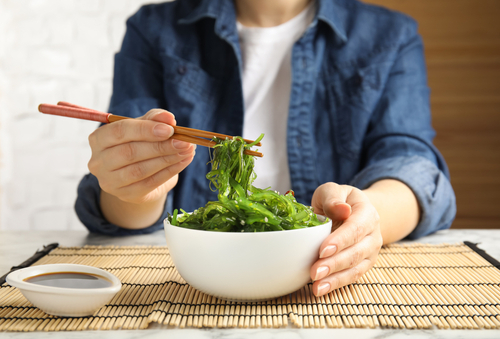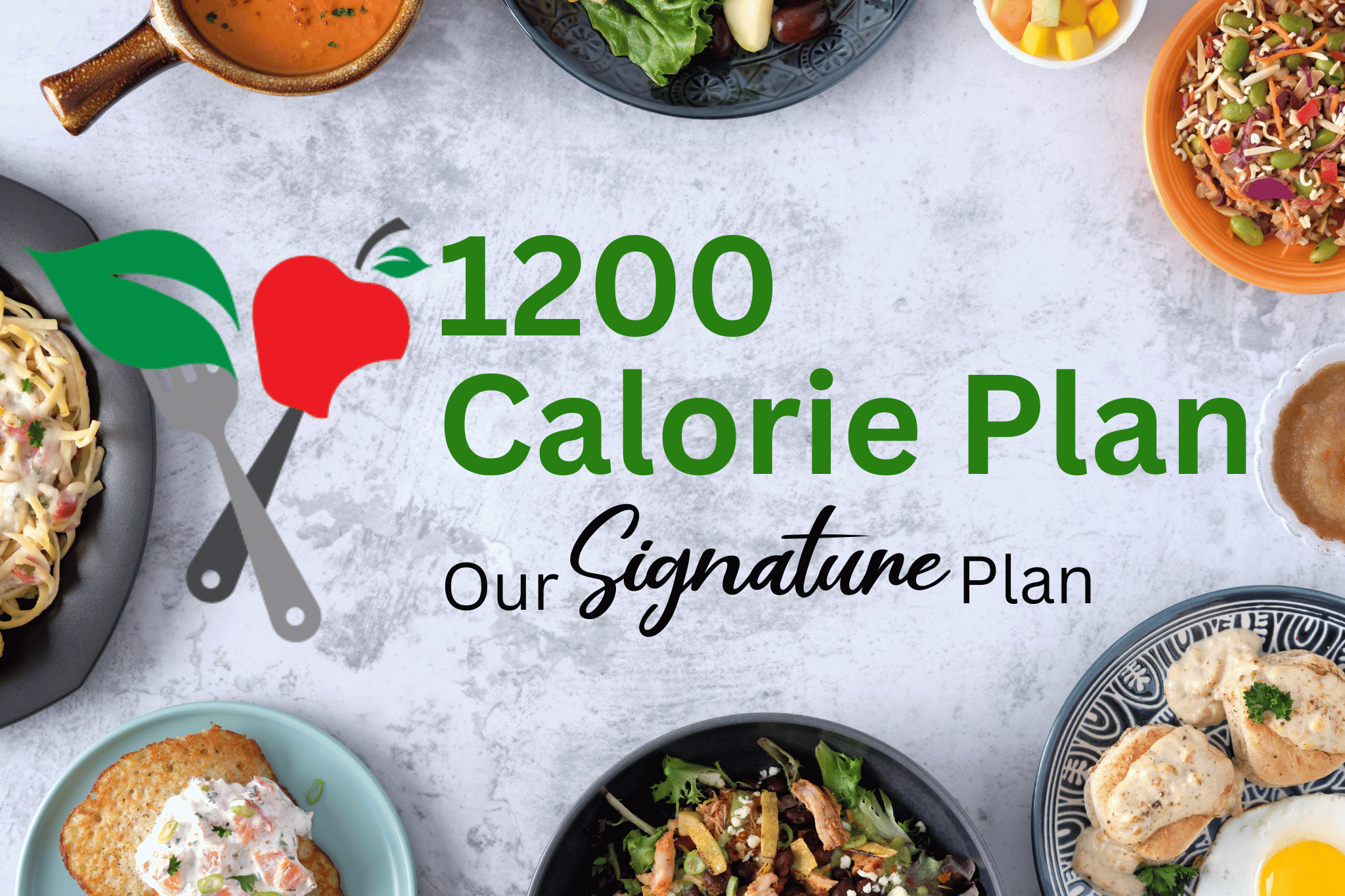Our Take on the 2023 Health Trends
We asked each of our health and culinary experts what their opinions are of the 2023 Top Health Trends. Each year brings a new list of health trends sure to fill up social media and google searches, however, not all of these trends are healthy or rooted in science. We asked our professionals for their take on what will be trending over the next year.
“Exercise snacks”
The recommendation is to get 150 minutes of exercise every week. We are all busy and finding time to fit exercise into our schedules can be difficult. The idea of “exercise snacks” is to fit in brief exercise sessions lasting a few minutes often throughout the day. This may be getting up from your desk throughout the day to climb the stairs, doing exercises while talking on the phone, or doing chair yoga for a few minutes before a virtual meeting. “Exercise snacks” fit easily into your day, are well tolerated, and are time efficient. The research suggests that it can improve metabolic health, endurance and strength, and benefit heart and lung health.
One of our Registered Dietitians, Alyssa, had this to say, “I love the idea of exercise snacks. Splitting the goal of 150 minutes of exercise a week into tiny bite-size sessions makes it less overwhelming and easier to make it a normal part of your day. Between work, kids, and other responsibilities it can be a struggle to find a free 30-minute block of time for me to exercise. However, I can easily squeeze in a 10-minute YouTube video during my lunch break, a 10-minute walk with the dog after the kids get on the school bus, and a quick 10-minute dumbbell workout after work.”
We all know that we need to sit less. Studies have shown that sitting for long periods increases the risk of obesity, high cholesterol, and blood sugar issues. “Finding ways to take an ‘exercise snack break’ throughout the day can help break up long periods of sitting too much which can also help improve your energy and concentration,” adds Alyssa
Adaptogens
Have you heard of adaptogens? They are active ingredients in plants and mushrooms that may affect how your body deals with stress, anxiety, and fatigue. Adaptogens have been around for many years but have been gaining popularity over recent years. Turmeric, ashwagandha, Asian ginseng, and mushroom coffee are all examples of ingredients and products you may see popping up at the grocery store promoting the benefits of adaptogens. Emily, Seattle Sutton’s Registered Nurse reports that she knows people that have used ashwagandha to help with stress and anxiety.
“Remember, that adaptogens will not solve your stress or provide a long-term solution,” says Alyssa, “they can, however, help your body respond to acute stress by helping to regulate chemical reactions in the body such as altering cortisol levels, supporting the immune system, and providing anti-inflammatory benefits.” Studies have found that adaptogens work best when taken for a shorter period, your body can build up resistance to their effects over time. Alyssa adds, “It is important to remember, that while these items may be helpful, they also aren’t regulated by the FDA. Be sure to talk with your healthcare team to make sure these items are right for you and stick to recommended amounts.”
“Ginseng has been found to stimulate physical and mental activity in people who feel weak and tired,” says Emily. Asian Ginseng has been used in traditional Chinese and Native American medicine for centuries. It is thought to help lower blood sugar and inflammation as well as increase resistance to environmental stress. It has also been promoted to help with concentration, memory, depression, and anxiety. “I would say to give it a try if you find it, for example in teas,” comments Emily. Most scientists note issues with studies on Asian ginseng commenting that they are not high quality, but it is thought to be safe for most people for short-term use. It does come with potential side effects though, trouble sleeping is the most common side effect but menstrual irregularities, faster heart rate, changes in blood pressure, headache, and digestive problems can also occur.
Lifestyle & Health Focus
We are big fans of this trend! Focusing on overall health and behaviors rather than on restrictive rules or a number on the scale is what we are all about. This can help people avoid feeling like a failure or setting themselves up with unrealistic goals. Being flexible with goals and focusing on overall health rather than viewing diet and exercise as all or nothing supports long-term change and a positive relationship with food and the body.
Miranda, one of our Registered Dietitians, had this to say, “Be realistic about your body. Human beings come in a variety of shapes, sizes, and weights. Genetic makeup includes our differing hair, eye, and skin color, so too our genetics determine our body size, shape, and weight. Too many people fail in trying to transform their bodies into a shape they are not meant to be because it is IMPOSSIBLE! Sadly, we start to feel inadequate because of repeated failures. Be realistic about your expectations. Think “health” first! Take care of and appreciate your body! Nourish your body by eating a balanced diet of fruits, veggies, whole grains, lean meats, and dairy every day and keep your body moving. This is when you will truly be HEALTHY!”
A broader goal of lifestyle change helps people find ways to implement healthy behaviors that work best for them. People tend to make changes they can stick to over the long run, which is better for overall disease reduction and weight management than yo-yo dieting and weight fluctuations.
Wearable Medical Devices
Fitbits and smartwatches are getting more sophisticated and making a huge difference in how we monitor our personal health. Smartwatches can track heart rate, blood oxygen, blood pressure, and more. People can track their exercise, calorie intake, and sleep through these popular wearable devices. There are even new devices that can track and detect signs of mental issues. Over the last 4 years, the use of this technology has more than tripled and healthcare providers and insurance companies are now interested in using these items to help provide better care.
According to Rene, Seattle Sutton’s president and owner as well as a Registered Dietitian and Diabetes Educator, “Knowledge is power! Knowing what your usual ranges are for heart rate, blood oxygen levels, and blood pressure can help you better determine when there is a health issue. Additionally, if you are training for an event, or just committed to regular exercise these devices can help you determine how much progress you have made with your overall health and goals. Keep in mind that devices like these are typically less accurate than the devices your doctor or other healthcare professionals use to measure daily vital signs, so this should not be considered as a replacement for regular checkups.”
If you are interested in using a wearable medical device and tracking your nutrition, Seattle Sutton’s Healthy Eating wants to help you reach your goals. All 315 of our nutrition labels are available for personal tracking on MyFitnessPal and FatSecret apps.

Personalized Healthcare
Precision medicine, drugs, and treatments are expected to be a hot trend for 2023. Precision medicine focuses on personalized healthcare that is specifically tailored to certain groups such as those from a certain age group or individuals who have specific genetics. This allows providers to determine how effective treatments will be or how likely people are to experience side effects.
“Personalized healthcare, also known as precision medicine, tries to address disease before it occurs while engaging individuals in their own healthcare decision-making. Each person has their own health risks, lifestyle choices, and goals for their health,” says Rene. “This type of personalized information can help achieve health goals quicker. However, this is a relatively new science with limitations including high cost, and fears associated with misinterpretation of data and genetic discrimination.
Seattle Sutton’s Healthy Eating is excited to see the future with this trend. We believe that health is not one size fits all, and love to see a focus on more individualized care.
Upcycled Food
According to our Executive Chef Marcus, “Upcycling is trending now, however, it has been something that’s been practiced by food operators for years in efforts to reduce food waste. Creative and responsible chefs should be able to take byproducts from ingredients and create something delicious and amazing. Items like dehydrated fruits and veggie snacks prepared from peelings of prepared foods or seasoning prepared from unused items that are roasted, dried, and then pureed into a powder are just a couple of creative examples of sustainable eating and reducing the biological footprint of food waste.”
The upcycling trend is catching on as a way to reduce food waste by using food that is traditionally discarded and finding new ways to utilize leftovers. Statistics show that 30% of all food is wasted. This can create problems for the environment and more. A survey showed that 60% of people want to purchase more upcycled food and 95% of people want to do more to reduce food waste.
This trend paves the way for more sustainable eating. At Seattle Sutton’s we try to implement upcycling and sustainable practices with our meals. We dehydrate unused produce and green onions to create different seasonings for our meals. Further, we focus on purchasing sustainably caught seafood and purchase locally sourced food whenever possible.
Yuzu
Yuzu is a popular tangy citrus fruit found in Asian cultures. In 2023, yuzu is expected to gain popularity for its antioxidant benefits. Chef Marcus adds, “Yuzu is gaining popularity due to its unique citrus profile and the emerging health benefits. Although yuzu possesses lemon tartness, it has a unique umami profile that makes it uniquely suitable for cooking. Yuzu also contains more vitamin C than a lemon which makes it desirable for those looking for a vitamin C boost.”
Unlike lemons, yuzu contains more seeds, less juice, and is often more expensive. It can be used as a garnish, zested for flavor, or juiced and used in marinades and vinaigrettes. This fruit is also popping up in skin care products because of its concentrated vitamin C for anti-aging benefits. You may also see it in aromatherapy because the scent is thought to have a calming effect.
Copycat Recipes
During the pandemic, many people stopped eating out because of fear of being in public and indoor dining being unavailable. The copycat recipe trend started with people wanting to enjoy restaurant favorites from the comfort and safety of home. With grocery prices skyrocketing and people focused more on health, this trend continues to grow. Copycat recipes are found online with ideas on how to make restaurant favorites in your own kitchen.
According to Miranda, “Copycat recipes are perfect if you want the flavor of your favorite restaurant meals. You can easily control the salt, fats, and sugar using healthy swaps or cutting back without losing the flavor. And BONUS it is very helpful to the pocketbook!”
“Getting people to eat out less and prepare more of their own foods has been a goal for many dietitians over the years. This trend is a great way for people to learn new cooking skills, understand what goes into their foods, and learn tricks on how to make recipes healthier. We also know that eating more meals at home has other benefits such as eating more mindfully, lower risk of weight issues, increased consumption of healthy foods, and improved relationships with family members,” Alyssa commented.

Edible Sea Plants
Kelp will be popping up everywhere in 2023. Kelp chips and kelp noodles are nutritious, versatile, and good for the environment. Emily, Seattle Sutton’s Registered Nurse said, “I have tried kelp chips before. I would just recommend eating them sparingly because they could be high in sodium.”
“We have just begun to ‘test the waters’ with sea plants as a food source even though it’s been a staple in other parts of the world for centuries. These mineral-packed delicacies can be eaten simply tossed in some sesame oil similar to the Wakame found in most sushi restaurants or on the other end of the spectrum as a dessert like the Carrageen Moss that's simmered until it forms a jelly then flavored with vanilla, rum, and milk which is commonly found in Europe,” explains Chef Marcus.
The nutrition of seaweed can vary but generally, it is a great source of iodine and antioxidants. Iodine is essential for the proper functioning of your thyroid. An inadequate amount of iodine in the diet can lead to an underactive thyroid, which affects weight, energy, digestion, and more. Seaweed also contains soluble fiber and omega-3 fatty acids, which are beneficial for blood pressure, cholesterol, and overall heart health. Just double-check the sodium content in certain seaweed “snacks.” To ensure you are not overdoing your intake of iodine or consuming harmful heavy metals avoid supplements and stick to the portion size of these items.
If you have kidney disease or take Coumadin, talk with your Dr. about adding these items to your diet due to their vitamin K and potassium content.
At Seattle Sutton’s Healthy Eating, we always stick to the science of eating right and avoid fads and trends. However, some of these trends are things we can get behind and actually implement into our program. Focusing on an overall healthy diet, maintainable lifestyle changes, increasing awareness and personalization in care, and finding ways to make these things work for YOU are all trends that we have been following since 1985!








 Weight Loss
Weight Loss Health & Wellness
Health & Wellness Diabetes
Diabetes Heart Health
Heart Health Motherhood & Family
Motherhood & Family Dietary Restriction
Dietary Restriction Other Health Conditions
Other Health Conditions About SSHE
About SSHE


